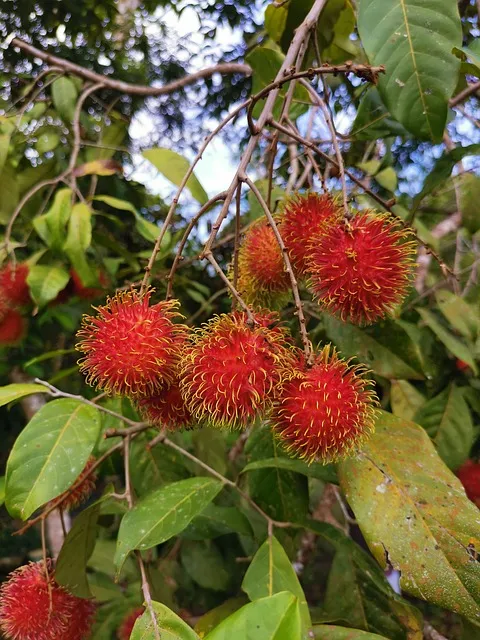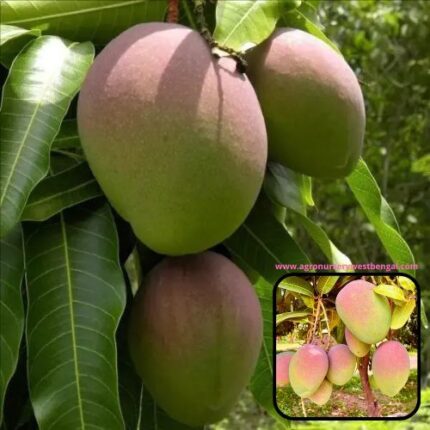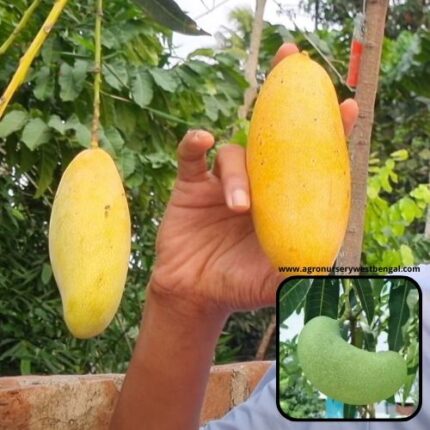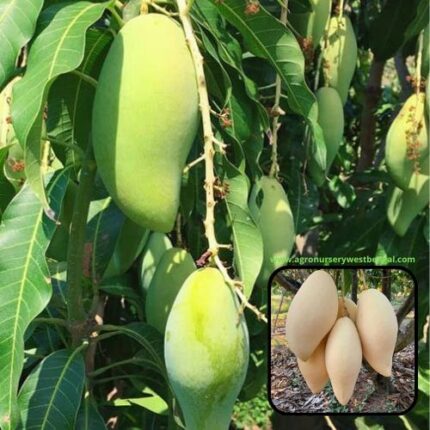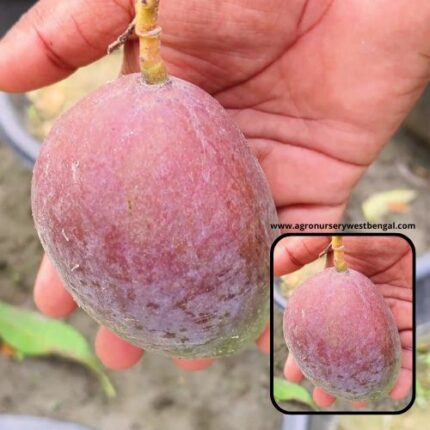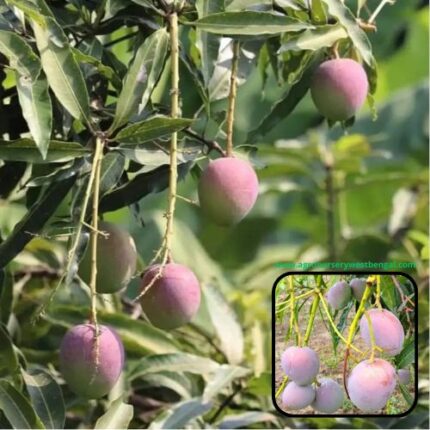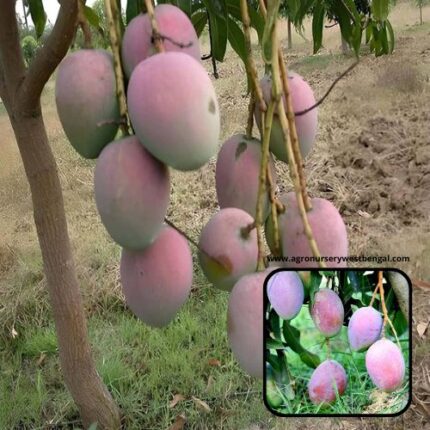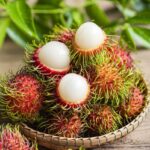

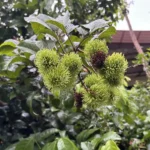
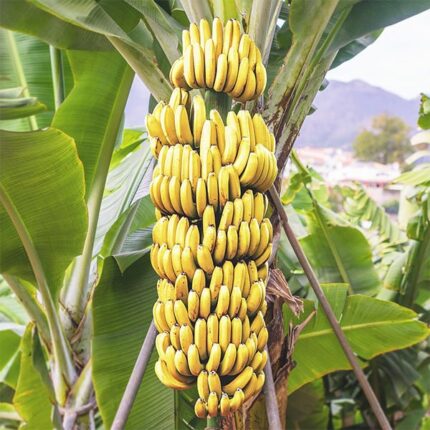
G9 banana fruit plants
₹499.00 Original price was: ₹499.00.₹349.00Current price is: ₹349.00.
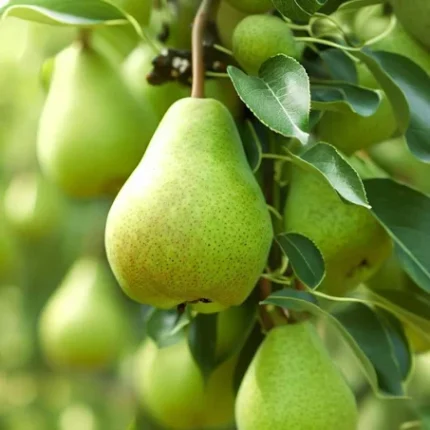
Babugosha fruit plants
₹699.00 Original price was: ₹699.00.₹499.00Current price is: ₹499.00.
Rambutan fruit plants
₹1,499.00 Original price was: ₹1,499.00.₹899.00Current price is: ₹899.00.
Category: Fruit Plants
Description
The Rambutan (Nephelium lappaceum) is an exotic and visually striking tropical fruit, closely related to the lychee and longan. Its name, derived from the Malay word “rambut,” literally means “hair,” a clear reference to its distinctive hairy exterior.
Here’s a detailed description of the Rambutan fruit:
1. Appearance (Exterior):
- Shape and Size: The fruit is typically round or oval, similar in size to a small hen’s egg or a golf ball, usually ranging from 3-5 cm (1.2-2 inches) in diameter.
- Skin: The most iconic feature is its thick, leathery rind covered densely with soft, fleshy, pliable spines (sometimes called “spinterns”) that are 1-2 cm long. Despite their appearance, these “hairs” are soft and flexible, not sharp.
- Color: When ripe, the skin can be a vibrant bright red (most common), but some varieties may also be orange or yellow. The tips of the “hairs” might remain slightly green. The intensity of the red often indicates ripeness.
2. Appearance (Interior):
- Flesh (Aril): Once peeled, the fruit reveals a translucent, juicy, white or sometimes pale pink flesh (aril). It’s somewhat firm yet succulent and slightly chewy.
- Seed: At the center of the flesh is a single, oblong, light brown seed. While some sources say the seed can be roasted and eaten, it is generally considered inedible fresh and can be bitter. Some commercial cultivars are “freestone,” meaning the flesh easily separates from the seed, while others are “clingstone,” where the flesh adheres more tightly to the seed.
3. Taste and Texture:
- Flavor: The taste of ripe rambutan is a delightful combination of sweet and mildly acidic, often described as a mix of grape, lychee, and sometimes subtle notes of strawberry or pineapple. It’s refreshing and aromatic.
- Texture: The flesh is juicy and somewhat jelly-like, similar to a lychee, with a pleasant chewiness. The tiny black specks, which are remnants of the inner seed coat, are also edible and add a slight crunch.
4. Origin and Cultivation:
- Native Region: Rambutan is native to Southeast Asia, particularly the Malay-Indonesian region, where it has been cultivated for centuries.
- Growing Conditions: It thrives in hot, humid, tropical climates and requires well-drained soil.
- Growth Habit: The fruit grows on medium-sized evergreen trees that can reach up to 15-20 meters (50-65 feet) in height, with dense, spreading crowns. The fruits typically grow in clusters.
- Fruiting Season: In tropical areas, rambutan trees can fruit twice a year, with main seasons varying by region (e.g., often late fall/early winter and a shorter season in late spring/early summer).
5. Nutritional Value and Health Benefits:
- Vitamins: Rich in Vitamin C, which is a powerful antioxidant and boosts the immune system. It also contains some B vitamins.
- Minerals: A good source of copper (important for blood vessels, immune system, and bones), as well as iron, phosphorus, manganese, and magnesium.
- Fiber: Contains dietary fiber, aiding in digestion and promoting gut health.
- Antioxidants: Besides Vitamin C, the fruit (especially the peel, though inedible) contains various polyphenols with antioxidant and anti-inflammatory properties.
- Hydration: High water content contributes to hydration.
6. How to Eat:
- To eat a rambutan, you can either gently squeeze or twist the fruit until the skin cracks open, then peel it back to reveal the translucent flesh. Alternatively, you can use a small knife to carefully slice around the middle of the fruit, cutting just through the skin, and then pull the two halves apart.
- The flesh is typically eaten fresh, discarding the central seed.
7. Other Uses:
- Beyond fresh consumption, rambutan is used in fruit salads, desserts, jams, jellies, and sometimes in savory dishes to add a touch of sweetness.
- The tree itself is also valued as an ornamental plant for its attractive foliage and colorful fruits.
The rambutan is a truly unique and delicious tropical fruit, offering a delightful sensory experience with its striking appearance, sweet flavor, and juicy texture


